Pronation and supination - it ... rotation, pronation, supination
Recently, a very popular is the study of human body movement from the standpoint of biomechanics. This holistic, holistic approach that treats the organism as a whole, instead of separate parts.

The science that studies the body
In this regard, there were also "fascia" and the concept of "myofascial chains." Science, which is directly concerned with the health of the human body is called kinesiology. From "kinesis" - movement, "logos" - study. That is, it studies the laws of motion of the body.
It can be applied in sport, in the treatment of pathologies that may be interested chiropractors and massage therapists. Specialists kinesiologists is not much, but more modern doctors - osteopaths, neurologists - are interested in the given direction.
Pronation and supination: what it means
Consider some of the terms used kinesiology, and explain to them. Rotation, pronation and supination - are types of limb movements and shoulder joints in kinesiology.
Pronation - a pivoting movement of the upper or lower extremities inside. This may be the movement of the hand, forearm and humerus. As well as the foot, tibia and femur.
Consider the example of his hands. If stretched out his hand so that the thumb is on top, and then carry out a rotation of 90 degrees inward so that the palm has acquired a horizontal position, such a movement and will be pronation. This type of rotation carries a group of muscles, called pronator.
Likewise made supination muscles - arch supports. Only in this case it is made a U-turn (rotation) of the lateral edges outward, in the opposite direction.
Pronation of the foot
Let us consider what it is - pronation of the foot? Separately, foot pronation can also be done. In this case it is necessary to rotate by pulling down the medial (inside the central axial line of the body). Engage the muscles - pronator lower extremities. long and short peroneal muscles involved in pronation of the foot.
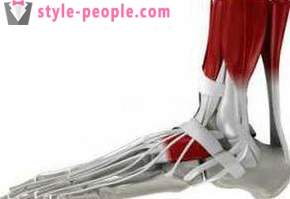
Supination - turning of the foot outward lateral (outward, outward from the axial line of the body) of the lower or upper limbs. The principle is the same as in pronation movement is carried out only in the opposite direction. It carried a group of muscles - arch supports: extensor hallucis longus and tibialis anterior.
Features gait and shoes
Probably, many noticed how some people go "clumsily", that is, they have poor arch supports and foot collapses inward. Or, on the contrary, walk in the style of "Chaplin," says the weakness of pronator. It should be noted that these muscle groups are antagonists. Antagonists - the opposite of their biomechanics group designed together to balance each other, holding the limb in a central position.
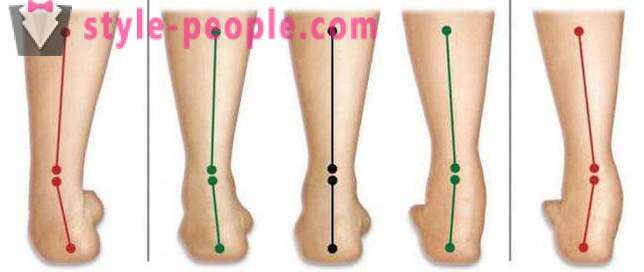
Pronation and supination - this applies to the upper extremities, and very different from those of the lower limb movement. This is due to the structure and mobility of the joint and tendon structures. There are three ways of setting up the foot when walking or running:
- with normal pronation. It is easy to identify on the trail foot on the wet sand or wet feet on the paper or on the floor. The imprint will be distinctive, curved outwards. On-site instep mark is not formed, it should be understood that this is - pronation of the foot is normal.
- With giperpronatsiey. In this case, the person becomes, as it were tucking into a stack, it is characterized by the presence of flat feet. Imprint of a foot wide, almost bent, lifting or minimum, or none at all. The sole for shoes in this case will be erased from the inner side (especially the heel). Stop, "littered with" inside the chain spins the rest of the foot, creating a rotation of the knee and the greater trochanter of the thigh. Which leads to wear of the articular surfaces. Severe pronation of the foot - it is in fact flat.
- With gipopronatsiey. This means pronator weakness and eversion of the foot outward. Also in people with gait gipopronatsiey special - as if they throw out socks is erased at the same outer side of the shoe sole, especially the heel. The knee joint while also rotates, creating a pathology, and the femur is also slightly turned inside out.
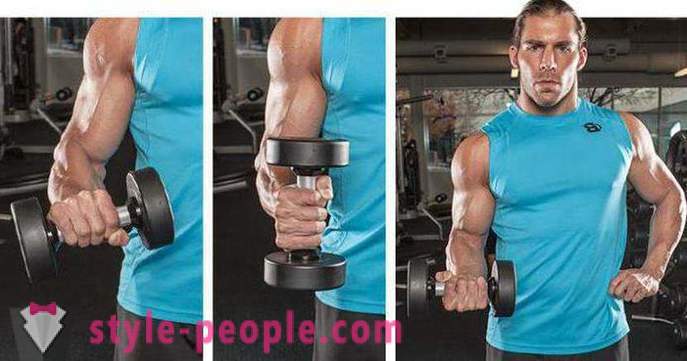
People with impaired pronation should consult a doctor or an orthopedic kinezioterapevtom and choose an optimal variant of the shoe. Sole she should not be thin, the heel portion will be strengthened and have a small heel. If gipopronatsii often doctors recommend wearing special inserts and insoles - arch supports. This is done to ensure that the foot of the violations did not rise up the muscle chains and do not cause arthritis and arthrosis of the joints due to compensatory rotation.
Shoulder
Pronation and supination - are two types of motion related to the shoulder as well. Characterized in biomechanics from other parts of the body and is completely dependent on the structure of the shoulder joint - one of the most difficult in its biomechanics. She made the movement of the shoulders inward (pronation) and laid back (supination). Pronator insoles and shoulder belts are designed to hold the posture, upper back straight position and also opposite in their biomechanics (antagonists).
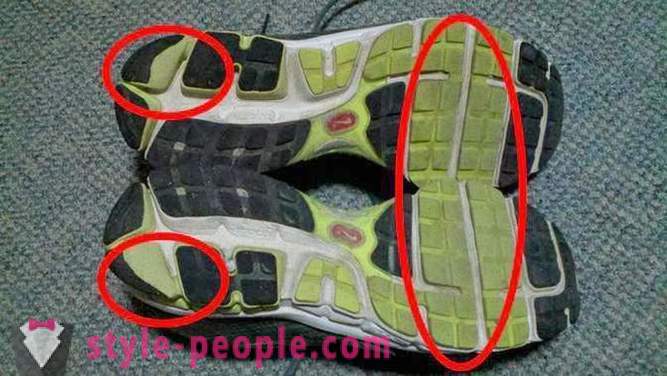
In pronation (inward rotation) shoulder muscles following work: pectoralis major, teres major muscle, the latissimus back and subscapularis.
In supination (outward rotation of the shoulder) involved muscles: infraspinatus and a large round.
rotation
Rotation - this is another type of movement, it means "rotation". Inherent not only to the body of course, but some of the constituent elements, such as vertebrae. It can be regarded as pronation and supination incomplete rotation. Range of motion of the upper and lower extremities is very different, it is important to remember. Any rotation is designed to stabilize the motion of the body.
Rotatores muscles (pronator and insoles) small, in general the relief of muscle unremarkable. But they need to talk to athletes, the coach should inform newcomers the importance of antagonists for the construction of the body composition.
Use in bodybuilding
In bodybuilding popular use of pronation and supination, it is important, for example, when lifting a dumbbell. When working with free weights athlete can use different muscle groups. Pronator and insoles need to pump up evenly. Visually, it is the muscles of the forearm and lower leg. If this is not done, then the bodybuilder arm will be placed in the hand while walking and your feet will be funny "disposed of".
Pronator and insoles shoulder as antagonists can both ruin your posture, and improve it. Therefore, bodybuilders need to pump as the pectoral muscles and the back muscles. Sometimes an athlete's shoulders, as it were wrapped in advance, it means stretching of diamond and infraspinatus muscles, the pectoralis major, on the contrary, strongly spasm. This can cause numbness in the fingers and pain in the attachment points of the pectoralis major muscle.
The rise of forearm supination
Lifting dumbbells with supination performed steer brush outside. Trained insoles: short supinator and biceps (biceps). Biceps becomes stronger during bending of the elbow to 90 degrees. The rotation of the forearm supination we perform while working with a screwdriver, for example, or loosening of the crane.
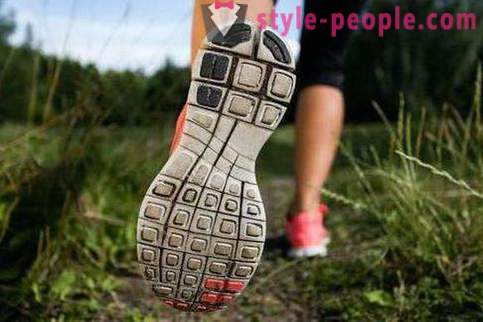
In this way, the rise of the biceps with supination trains more muscles and stabilizes the upper arm, making it strong. This is particularly important in arm wrestling.
By pronator include: square and round pronator pronator. They are much weaker than their antagonists. When a person is difficult to unscrew the bolt twisted askew, he uses great strength and uses a turn inward shoulder (shoulder pronation). Brachioradialis muscle acts in this case, pronator, although initially this function it is not inherent. Initially, the brachioradialis muscle - flexor forearm.
The harmonious structure of the body - is the goal of muscle study, so it is necessary to consider the role of pronation and supination of both professional athletes and beginners.













































